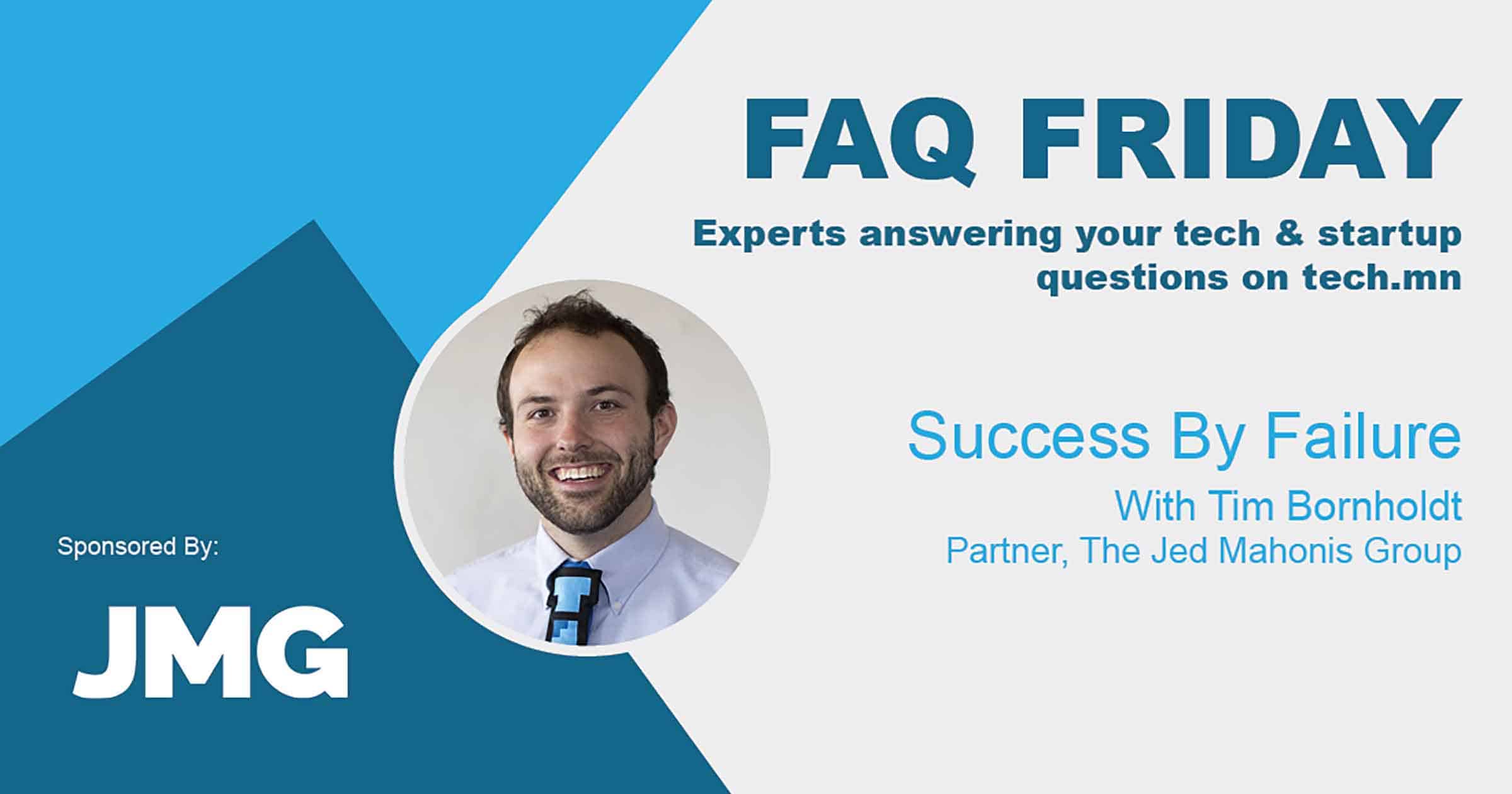Welcome to our latest FAQ Friday, where industry experts answer your burning technology and startup questions. We’ve gathered Minnesota authorities on topics from software development to accounting to talent acquisition and everything in between. Check in each week, and submit your questions here.
This week’s FAQ Friday is sponsored by fulcrum. fulcrum helps mid-sized production shops bring their workflow into the future through flexible software that creates a connected supply chain, reduces time-intensive data entry, and increases the overall speed of a company’s entire network.
Meet Our FAQ Expert
Yu Sunny Han, Founder & CEO at fulcrum | @sunnythehan
As the CEO and Founder of fulcrum, Sunny is dedicated to delivering a connected future where frictionless manufacturing production and supply chains lead to faster and better product innovations.
This Week’s FAQ Topic – Small Business Sales
Is there a way to get around cold calls or are they necessary to building a client base?
Unless you’re already famous, have found product/market fit before your first customers, and can predict the future, you shouldn’t want to get around cold calls. Cold outbound always works to some extent. Early on, when you’re short on money but have plenty of time, cold calling and BASHO emailing are among the best ways to land your first customers. Whether your product or service is a better mousetrap or something truly original, finding product/market fit is the most important part of any venture. Getting to that point without any customers would require an immense amount of luck. And you need all the luck you can get for everything else.
If you woke up having travelled back in time to 2002 with nothing but your clothes and an iPhone factory, how would you sell it? How would you build a customer base? Would you pay for clever AdWords or buy a billboard? How many people would be searching for what you’re building? The more innovative and different your product or service is, the more valuable direct outbound contact is early on.
Most people’s resistance to cold calling stems from the fact that they’ve rarely seen it done well. You could imagine if your only experience skiing was on small icy hills, you may not understand the motivation to fly through a snowstorm to catch some great powder. The fact that you’ve received so many annoying cold calls means that even bad cold calling works enough to justify the cost. Imagine how well it would work if you did it with some style and grace.
Some quick tips that helped me get through those first calls:
- Persistence and pushiness are not the same thing. If you’re really onto something great, a short intrusion into someone’s day won’t really matter. If everyone you call is constantly annoyed, you either haven’t found your market or your product sucks. Get a better list or make what you have to sell better.
- Perseverance is the key to all success. You won’t be good at this, especially if your instincts are to avoid it already. Keep trying, make small changes, practice on a friend, and be warm and engaged on the 100th call after 99 rejections.
- Positivity and catharsis win every time. Be pleasant, offer to call back if it’s not a good time. Ask questions, get to know your customers’ pain, take notes, ask follow-up questions, encourage them to keep talking to you. Channel your passion and the results will improve dramatically
- Preparation always helps. Look over your previous notes and do whatever you need to get into the right mindset. Have your system down. Do the research and organize your lists to group together similar contacts. Research what’s going on in their industry and in their geographical area. Track your activity. Figure out when the highest success rates are throughout the day and the week.
How can I connect with a potential client in a genuine way while still moving toward closing a sale?
By actually caring about them. Frances Frei, a professor at Harvard Business School, has built a strong case for her thesis that trust comes from three components: logic, authenticity, and empathy.
For most people, the logic comes easily. The rawest and earliest form of a pitch is almost always a logical argument. Especially for technically minded people, it’s very common to look for the silver bullet argument that can’t be beaten. Logic alone so seldom wins the hearts and minds of the market. If it was possible, tech startups would never need to hire salespeople. The harder (and equally valuable) pieces are squishier and more uncomfortable for many.
Authenticity comes as much from knowing your stuff as it does from admitting when you don’t know something. It’s more okay than you may think to not have the answers to your prospect’s questions. Faking it kills whatever authenticity you may have had going for you. You’re not going to get it right every time, and certainly not right away. Stop trying so hard to close the deal and focus on being real.
Empathy is difficult and rare. When was the last time you really felt understood? Starting a company often requires you to believe that you have a better way of doing something; a new way. It can train you to be protective of your ideas and your mind. Remind yourself that it was empathy that allowed you to realize something new was possible in the first place. Insight and inspiration are synonyms for understanding. Force yourself to care about understanding the person you’re talking to; not just their facts and figures, but what really drives them and who they are.
Lastly, as you get better at building trust, deals will start to appear where they previously seemed impossible. The biggest trap at this stage is one we’re all guilty of — skipping over the details you’ve already seen before. Ask every question, even if you know the answer. Go through the entire journey and remind yourself that even though it’s not your first time, it is for the customer. The interaction is the journey, and no one can hear what goes on in your head. No one can see the memories you’re drawing from. Bring them along with you and guide them towards a joint discovery — that they have a need, and that you have the answer.
Or maybe you don’t have the answer, and they don’t need you. If that’s the case, the worst that can happen is you created a refreshingly real interaction with someone. You learned about a person and a business. You found a place that you can’t make an impact… yet. Both you and the customer will remember that fondly.
When choosing potential clients, do I stay within my company’s niche or branch out?
It’s really difficult to be Amazon on a lemonade stand budget. The key to success in building something new is to strip everything you can down to the most essential pieces. What we’re building at fulcrum is super complex. Yet, we work hard every day to make the most essential set of features as amazing as possible. You simply don’t have the bandwidth to process and convert 1% of 1,000,000 customers. Find the narrowest and richest part of the market.
Our product happens to be in an area where niche solutions exist by the bushel. The legacy companies that maintain them have had a hard time expanding outside of their initial industry-specific niche. Even still, our mission and thesis to make a platform that is amazing across all of these verticals has led us to define our own niche differently — based on the business processes we can make the most impact on.
Your initial instinct to stay within your company’s niche is the right one. The challenge is not letting the existing players define your niche for you, pigeonholing you into a game that they already know how to win. Instead, try to find your own definition of what the ideal target audience is, based primarily on what you can do to delight your customer, and where you deliver the stickiest value.
Still have questions? Ask Sunny questions on sales and more on Twitter at @sunnythehan.






